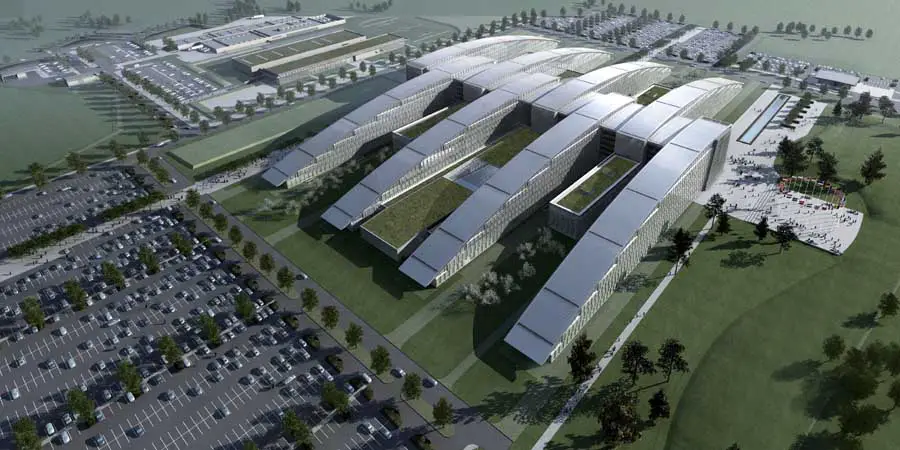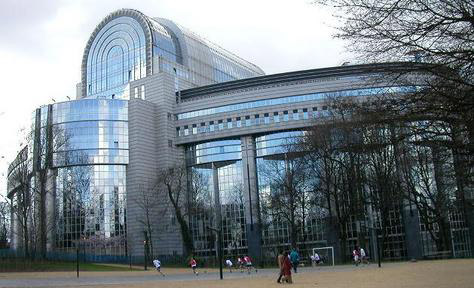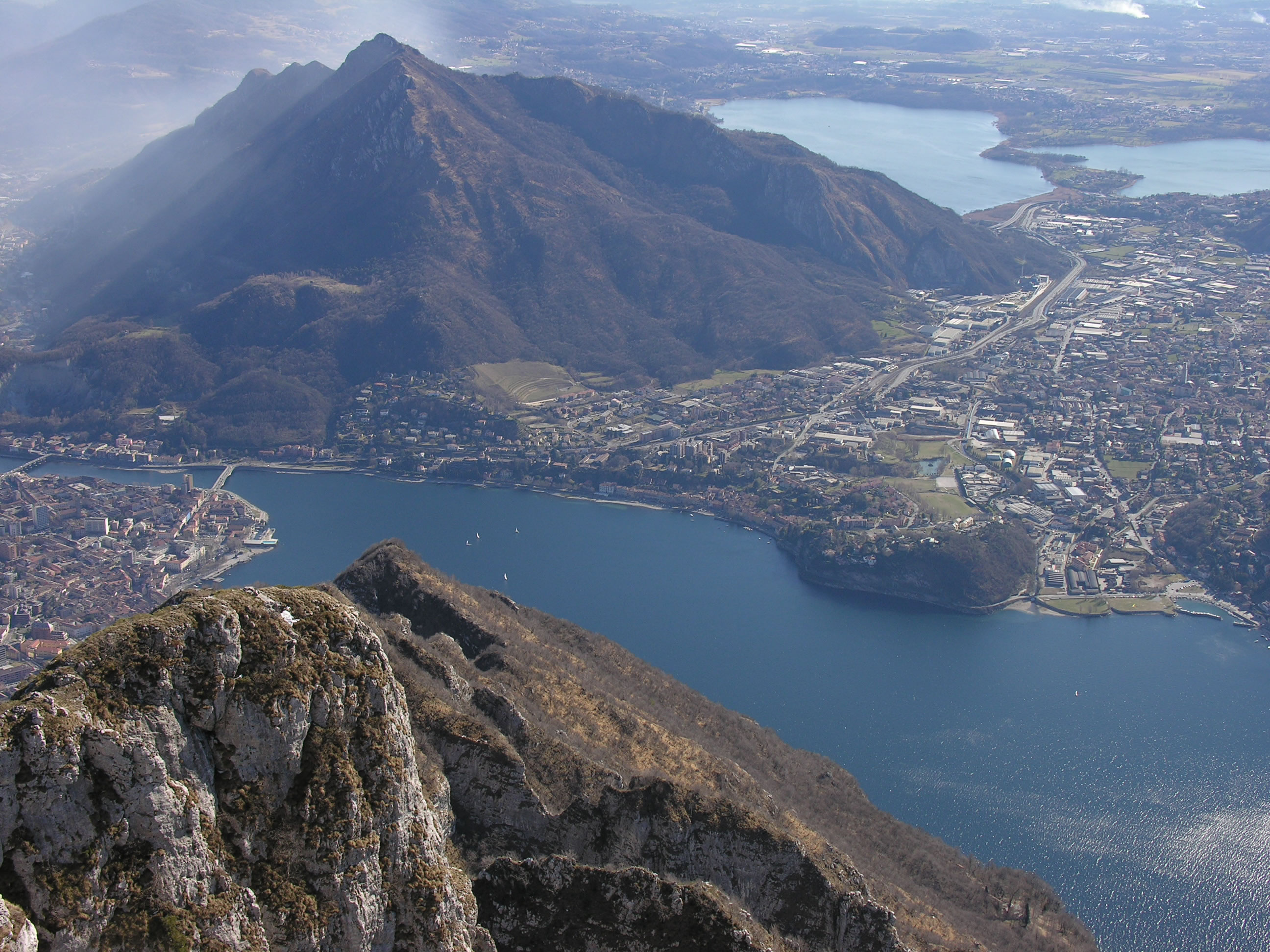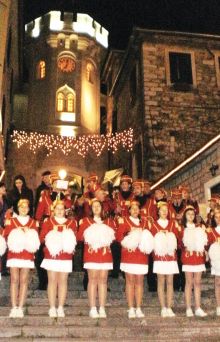Nice city, Tirana. What is the "Pyramid" used for?
-- Brussels
The Atomium, one of Belgium's most recognisable monuments. It was built in 1958 for the World Fair, and much like the Eiffel Tower was only intended as a temporary structure but it was retained in the end as a national symbol and is one of the capital's top tourist attractions. It often appears behind the person who gives Belgium's points at the Eurovision Song Contest (alternatively with the Grand Place).
Point of note: contrary to the Eiffel Tower, the Atomium is actually located far from the city centre, in a (residential) area where there are few other curiosities.

The Grand Place is the other major tourist attraction in Brussels. It is located right in the city centre, and it is very charming. If you come to Brussels, not seeing the Atomium is forgivable. But you have to see the Grand Place!

Now, everyone knows that Brussels is the seat of most European institutions, and that there are numerous international organisations located there (NATO, for example).
NATO is located in the North-Eastern part of Brussels, very close to Brussels Airport and the 'Ring' (a circular motorway akin to London's M25). They are currently building new headquarters.

The European Commission has its offices in the Berlaymont Building. A mammoth dwarfing the Luxembourg quarter of Brussels, it has been the subject of many controversies and it suffers from a very strong love-hate relationship with the inhabitants of Brussels.

The European Parliament is located not far from the Berlaymont, right above the Gare de Bruxelles-Luxembourg train station. It is also a massive glass monument. Contrary to the Berlaymont, it blends into the Leopold park that surrounds it, and with the Place du Luxembourg, where Eurocrats usually meet after work.

Place du Luxembourg (the top of the European Parliament building can be seen in the background);

The Rue de la Loi/Wetstraat is a very busy entry point into the city centre of Brussels. The whole European Quarter has been built around it, and the institutions of the Belgian State (government, parliament) as well as the Flemish Parliament are located nearby. Speculation has destroyed the neighbourhood's social make-up, and there are plans to build much higher skyscrapers to free up some space for commercial and residential purposes (at the moment, except for the never-ending flow of cars, the Rue de la Loi is all but deserted from 6pm to 7am). As you can see on the picture, it is also a choke-point for traffic and can be hell at rush hour.

More later :-D
-- Brussels
The Atomium, one of Belgium's most recognisable monuments. It was built in 1958 for the World Fair, and much like the Eiffel Tower was only intended as a temporary structure but it was retained in the end as a national symbol and is one of the capital's top tourist attractions. It often appears behind the person who gives Belgium's points at the Eurovision Song Contest (alternatively with the Grand Place).
Point of note: contrary to the Eiffel Tower, the Atomium is actually located far from the city centre, in a (residential) area where there are few other curiosities.

The Grand Place is the other major tourist attraction in Brussels. It is located right in the city centre, and it is very charming. If you come to Brussels, not seeing the Atomium is forgivable. But you have to see the Grand Place!

Now, everyone knows that Brussels is the seat of most European institutions, and that there are numerous international organisations located there (NATO, for example).
NATO is located in the North-Eastern part of Brussels, very close to Brussels Airport and the 'Ring' (a circular motorway akin to London's M25). They are currently building new headquarters.

The European Commission has its offices in the Berlaymont Building. A mammoth dwarfing the Luxembourg quarter of Brussels, it has been the subject of many controversies and it suffers from a very strong love-hate relationship with the inhabitants of Brussels.

The European Parliament is located not far from the Berlaymont, right above the Gare de Bruxelles-Luxembourg train station. It is also a massive glass monument. Contrary to the Berlaymont, it blends into the Leopold park that surrounds it, and with the Place du Luxembourg, where Eurocrats usually meet after work.

Place du Luxembourg (the top of the European Parliament building can be seen in the background);

The Rue de la Loi/Wetstraat is a very busy entry point into the city centre of Brussels. The whole European Quarter has been built around it, and the institutions of the Belgian State (government, parliament) as well as the Flemish Parliament are located nearby. Speculation has destroyed the neighbourhood's social make-up, and there are plans to build much higher skyscrapers to free up some space for commercial and residential purposes (at the moment, except for the never-ending flow of cars, the Rue de la Loi is all but deserted from 6pm to 7am). As you can see on the picture, it is also a choke-point for traffic and can be hell at rush hour.

More later :-D














































